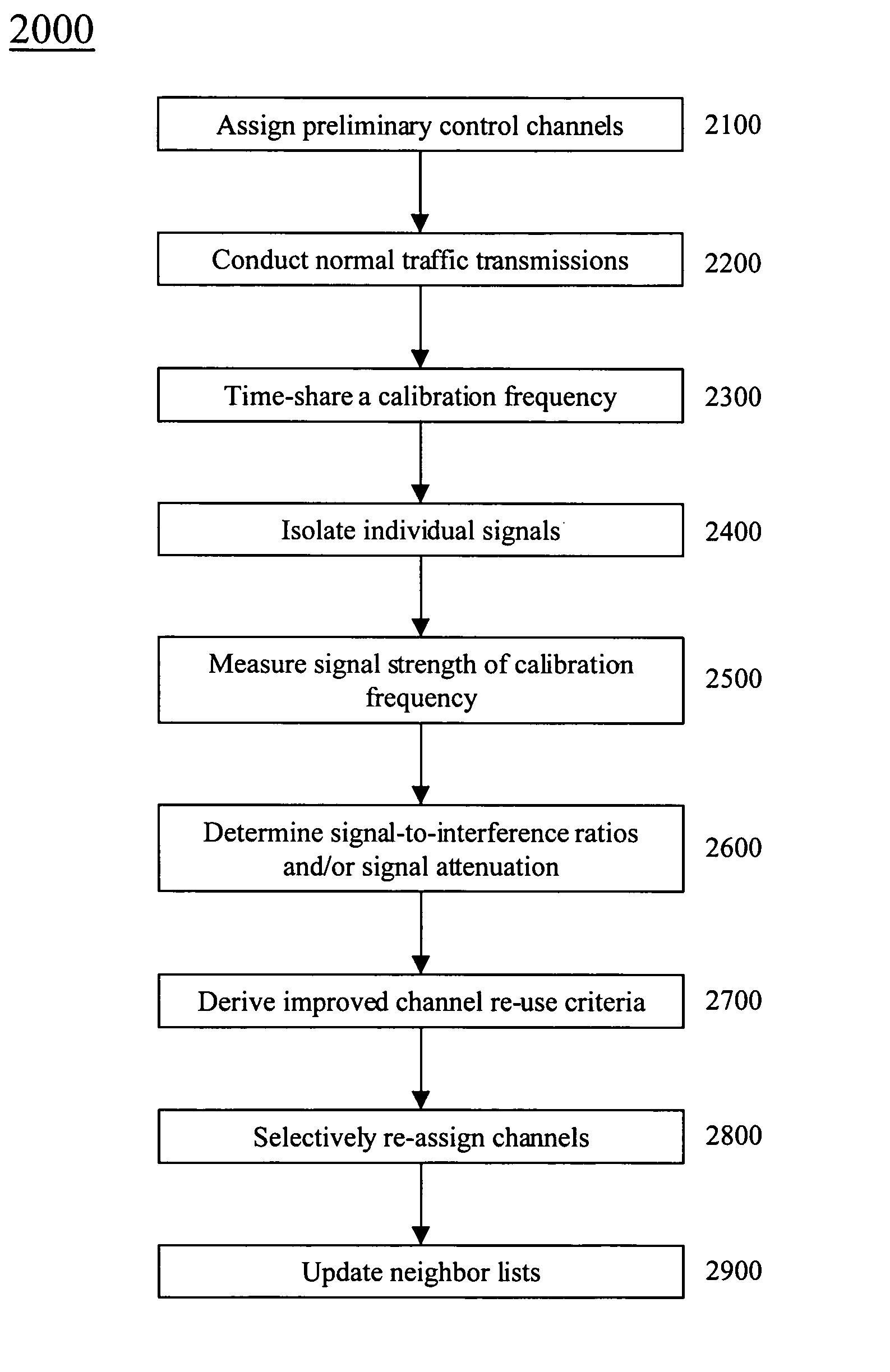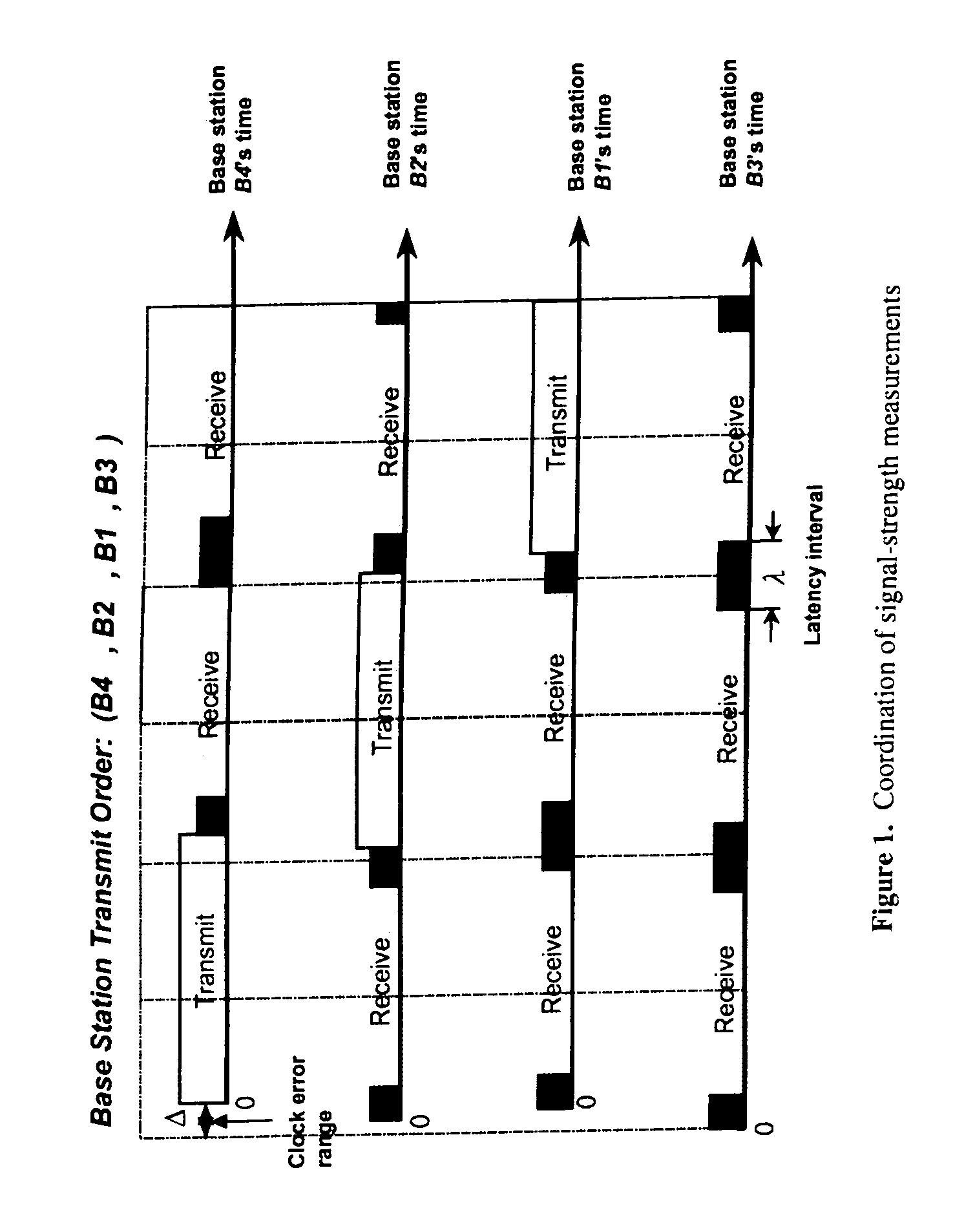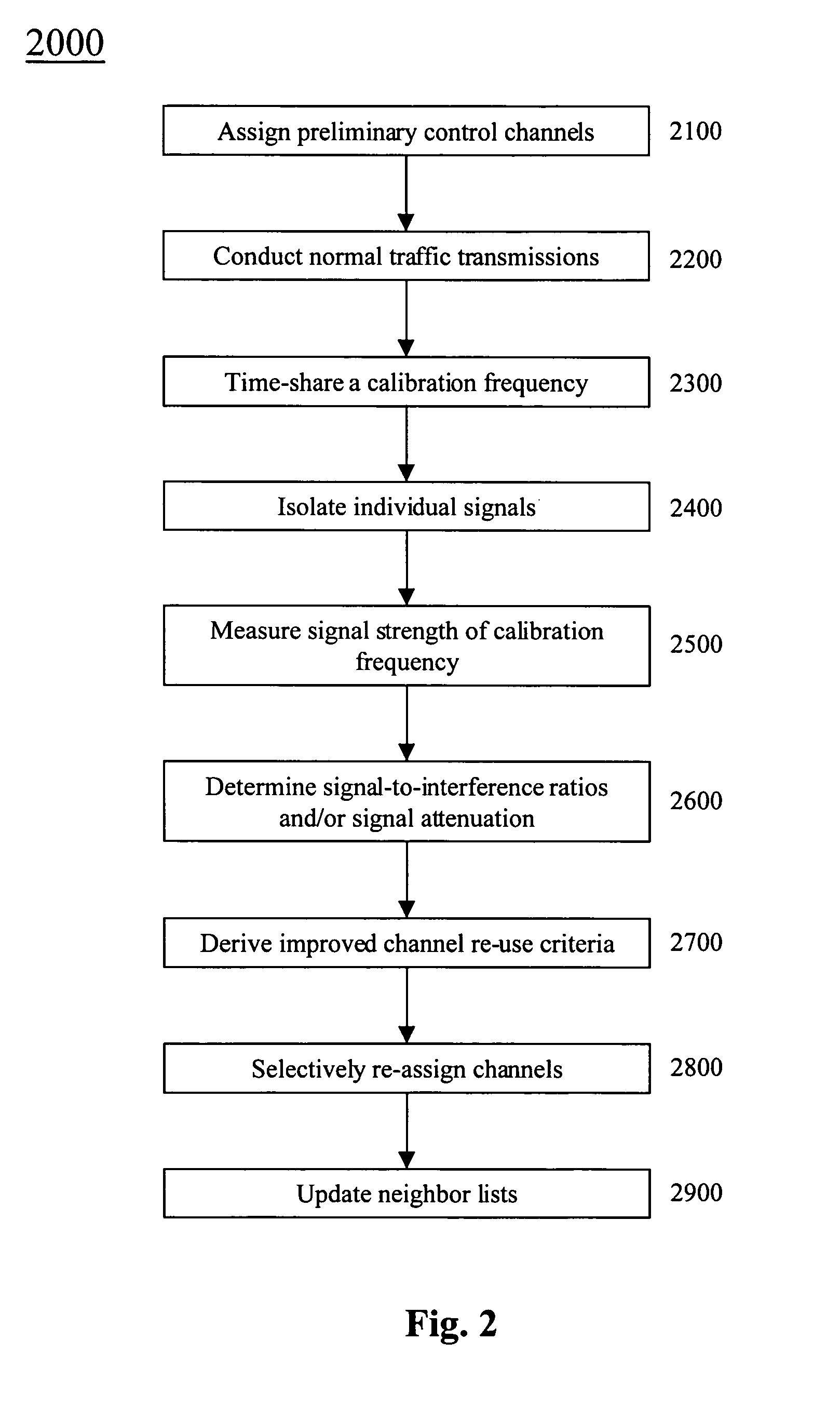Self-configuring wireless system and a method to derive re-use criteria and neighboring lists therefor
a wireless system and self-configuring technology, applied in the field of self-configuring wireless systems, can solve the problems of complex mixture of cells, difficult and expensive manual radio frequency planning of such systems, and more substantial
- Summary
- Abstract
- Description
- Claims
- Application Information
AI Technical Summary
Benefits of technology
Problems solved by technology
Method used
Image
Examples
Embodiment Construction
[0015]The invention addresses the problem of constructing interferer, and by extension neighbor, lists based on measurements collected by the system. We start with a discussion of channel assignment and describe the statistical hypothesis tests employed to derive re-use criteria. After describing the data used to test the hypothesis and how it is collected, we present the statistical test design. The methodology presented herein is discussed in the context of circuit-switched voice calls. The same methodology applies to packet-based access for data.
“Channel Assignment”
[0016]Channel assignment associates RF frequencies or time slots with users, for a given time-interval, in a way that maintains the specified communication quality. We refer to a group of cells assigned the same frequency as a co-channel group. The problem addressed by channel assignment is, first, to identify the composition of various co-channel groups and, second, to assign frequencies to these groups. Two distinct ...
PUM
 Login to View More
Login to View More Abstract
Description
Claims
Application Information
 Login to View More
Login to View More - R&D
- Intellectual Property
- Life Sciences
- Materials
- Tech Scout
- Unparalleled Data Quality
- Higher Quality Content
- 60% Fewer Hallucinations
Browse by: Latest US Patents, China's latest patents, Technical Efficacy Thesaurus, Application Domain, Technology Topic, Popular Technical Reports.
© 2025 PatSnap. All rights reserved.Legal|Privacy policy|Modern Slavery Act Transparency Statement|Sitemap|About US| Contact US: help@patsnap.com



